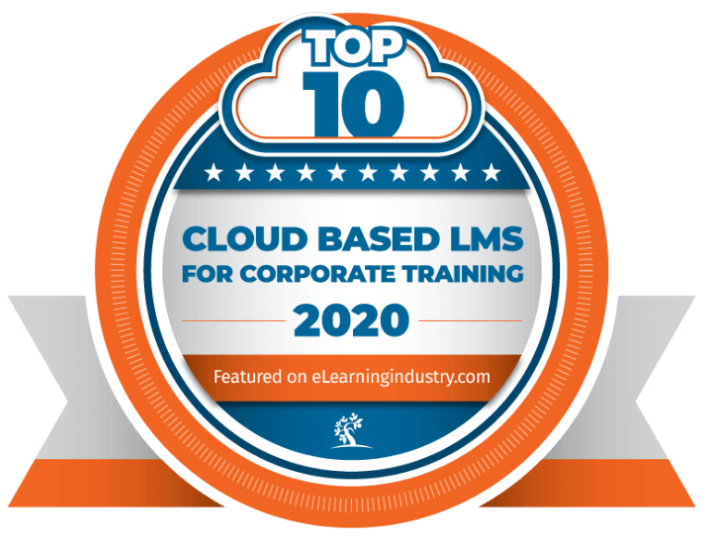April 9, 2024
Mastering Corporate Training: Choosing Between LXP and LMS

Are you feeling overwhelmed by the vast landscape of corporate eLearning? Does the distinction between Learning Experience Platforms (LXP) and Learning Management Systems (LMS) leave you perplexed and uncertain about direction? With the eLearning market projected to reach a staggering USD 848.12 billion by 2030, growing at a robust CAGR of 17.54% (GlobeNewswire), it’s clear that digital transformation is reshaping the training paradigm. Yet, amidst this evolution lies a critical challenge: understanding the nuances between LXP and LMS platforms.
This blog post comprehensively analyzes the differences between LXP and LMS platforms and provides insights into making informed decisions regarding your organization’s corporate training strategy.
Understanding LXP
An LXP is a learner-centric platform that delivers personalized and engaging learning experiences. Unlike traditional LMSs, which focus on structured content delivery, LXPs prioritize learner autonomy and exploration. By incorporating features like content curation, social learning, and adaptive pathways, LXPs enable learners to take ownership of their learning trajectories.
Advantages and Disadvantages of LXP
- Personalized learning experiences: Leveraging individual learner preferences and objectives, LXPs generate tailored learning pathways, fostering a more engaging and motivating learning experience.
- Learner autonomy and control: LXPs empower learners to explore topics at their own pace and choose content relevant to their learning goals, fostering a sense of ownership over their development.
- Enhanced learner engagement: The interactive and social features of LXPs, such as gamification and peer collaboration, promote active participation and knowledge sharing among learners.
Advantages
- Limited suitability for structured training: LXPs may not be ideal for organizations requiring strict adherence to standardized training programs or regulatory compliance.
- Potential lack of tracking and reporting features: LXPs may offer limited reporting capabilities compared to LMSs, making it challenging for organizations to assess training effectiveness and compliance.
- Higher maintenance effort and resources required: The diverse content types and interactive features of LXPs may require more extensive maintenance and ongoing support, increasing organizations’ resource requirements.
Disadvantages
Understanding LMS
LMSs are centralized platforms primarily focused on managing and delivering structured training content. They excel at organizing courses, tracking learner progress, and generating comprehensive reports. They are ideal for organizations requiring standardized training programs, such as compliance or certification courses.
Advantages and Disadvantages of LMS
- Structured training capabilities: LMSs excel at delivering standardized training programs, ensuring consistency and compliance across the organization.
- Robust tracking and reporting features: LMSs offer detailed learner progress reports, empowering organizations to evaluate training impact and pinpoint opportunities for enhancement.
- Centralized content repository: LMSs offer a centralized platform for storing and managing training content, streamlining access for learners and administrators alike.
Advantages
- Challenges in offering personalized learning experiences: LMSs may struggle to provide tailored learning paths for individual learners, leading to a one-size-fits-all approach.
- Potential overwhelms for learners: The structured nature of LMSs can overwhelm learners with a large volume of content, hindering engagement and retention.
- Time-consuming setup and technical expertise required: Implementing and configuring an LMS is a significant undertaking that demands both dedicated resources and technical proficiency.
Disadvantages
Differentiating Factors between LXP and LMS
- Adoption rates and trends: LXPs are experiencing rapid adoption, driven by the demand for personalized learning experiences and increased learner engagement.
- Approach to content curation and delivery: LXPs prioritize content curation and user-centered design, while LMSs focus on structured content delivery and administrative control.
- Social learning features: LXPs often feature social learning capabilities, enabling learners to collaborate, share knowledge, and learn from one another.
- Cost considerations: LXPs may have higher initial implementation costs and ongoing maintenance expenses than LMSs.
- Usage patterns and scenarios: LXPs are commonly used for informal, on-demand learning, while LMSs are preferred for structured, compliance-driven training programs.
Finding the Best Fit for Corporate eLearning
When choosing between LXP and LMS, organizations should consider factors such as training goals, organizational culture, scalability, and budget. While LMSs are well-suited for formal training initiatives, LXPs prioritize personalization and engagement for a tailored learner experience. Organizations seeking flexibility and maximum impact may find a combined LMS/LXP approach ideal for their eLearning needs.
Conclusion
As organizations strive to meet the evolving needs of their workforce, understanding the differences between LXP and LMS is essential. By evaluating their training goals and considering the unique capabilities of each platform, organizations can make informed decisions and master corporate training. Whether opting for the structured approach of an LMS or the personalized experience of an LXP, the key is to prioritize learner engagement and effectiveness. By embracing innovation and leveraging the latest technologies, organizations can unlock the full potential of eLearning and empower their workforce for success.
Ready to take your corporate training to the next level? Visit Unlock:Learn today to explore our comprehensive eLearning solutions.







